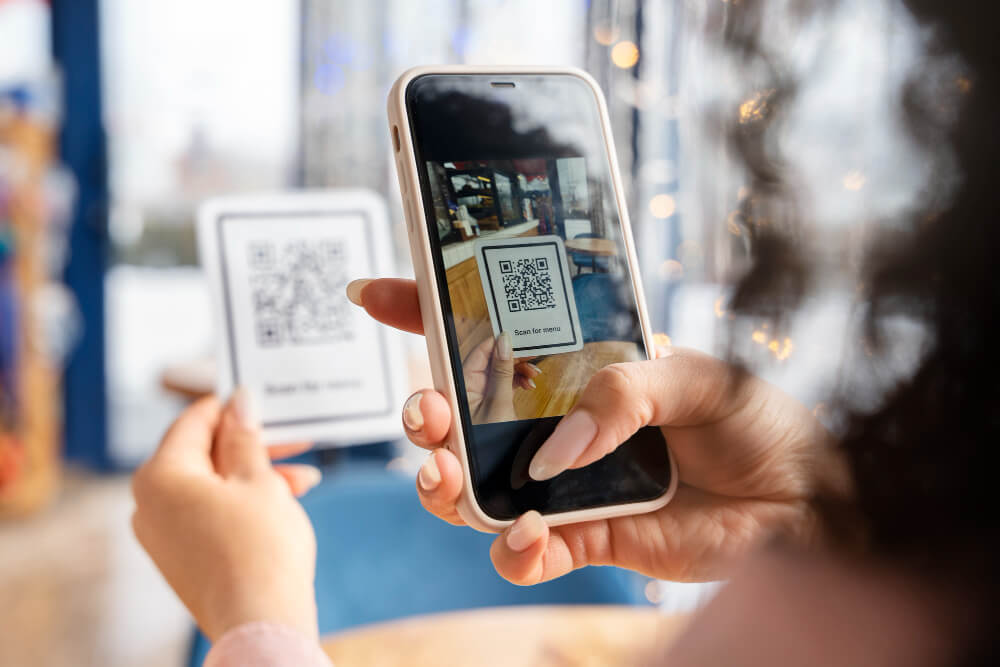
O2O (online-to-offline) commerce has become a defining trend in modern retail, reshaping how brands connect with customers. It bridges the gap between digital convenience and physical experiences, allowing shoppers to discover, purchase, and interact seamlessly across channels.
This article explores what O2O commerce really means, how it drives revenue and brand value, and practical steps for building a successful O2O strategy.
What is O2O commerce & how it works
Online to offline (O2O) commerce is a strategy that connects digital interactions with in-person shopping to create a unified customer journey. While it may sound similar to omnichannel retail, the two are not identical. Omnichannel focuses on building a consistent presence across both online and offline channels, whereas O2O focuses specifically on driving conversions between these channels.
The core mechanism of an O2O strategy is simple: attract customers online, and convert them offline (or vice versa). Retailers use their websites, apps, social media, and digital ads to reach customers, then guide them toward physical locations where they can engage with products, receive services, or finalize transactions.
Traditionally, physical retailers struggled to compete with eCommerce in terms of price, product range, and convenience. Brick-and-mortar stores face higher operating costs and limited shelf space compared to online warehouses. O2O strategies tackle this challenge by using online channels to build awareness and demand, then fulfilling those needs through local store networks.
Behind the scenes, integrated systems synchronize customer data and inventory, ensuring that both digital and physical touchpoints work together seamlessly. As a result, retailers achieve a truly unified commerce approach.

O2O commerce market & trends shaping retail in 2025
The online to offline retail landscape is expanding quickly as digital and physical channels become increasingly interconnected. According to Forrester, global retail eCommerce sales will grow to $6.8 trillion by 2028, accounting for 24% of total retail sales.
Yet, physical stores will remain essential, generating $21.9 trillion of the projected $28.7 trillion in global retail sales. The balance highlights a clear opportunity: businesses that can effectively bridge online and offline experiences will be well-positioned to capture future growth.
A strong example of this opportunity in action is Mr. Pet, a Canadian pet retailer that successfully adopted an O2O model with Magestore POS. Magestore POS connects Magento websites with physical stores and pop-up shops, enabling real-time inventory visibility and a unified customer experience.
By integrating its Magento eCommerce backend with Magestore POS and PWA technology, Mr. Pet is able to synchronize inventory, improve fulfillment, and enhance customer service, boosting both efficiency and omnichannel sales performance.
Beyond market growth and successful retail examples, technology plays a critical role in powering online to offline (O2O) strategies. Below are four key tech trends shaping modern online to offline retail:
BOPIS (buy online, pick up in-store)
BOPIS stands out as a powerful way to turn online browsing into offline purchasing. Customers browse products on a retailer’s eCommerce site, place their orders, and receive a notification when their items are ready for pickup at a nearby store.
This model offers both convenience and speed. In a world where streaming and on-demand services have set a high bar for immediacy, shoppers now expect the same from retail experiences.

Click-and-collect & curbside pickup
Initially adopted during the pandemic, click-and-collect and curbside pickup have since become staples of modern retail. With click-and-collect, customers place their orders online and pick them up at a designated point – either inside the store or from their cars. Curbside pickup, in particular, has gained popularity thanks to its speed, convenience, and minimal contact, which perfectly match shifting consumer expectations.
In-store returns for online purchases
Allowing customers to return online purchases in-store is a simple but powerful O2O strategy. It removes common friction points like repackaging, printing labels, or waiting for shipping, which are often major barriers to online returns. By making the process more convenient and immediate, retailers build trust and foster stronger customer relationships.
QR codes and mobile engagement
QR codes now serve as a vital link between digital touchpoints and in-store engagement. Research shows that two-thirds of shoppers use their smartphones to check product details while visiting stores. By placing QR codes in high-traffic areas – such as checkout desks, fitting rooms, or product displays – retailers give customers quick access to information, promotions, or services.
QR codes also integrate well with Textmagic’s SMS solutions for retail, enabling brands to send real-time updates, personalized offers, or reminders directly to customers’ phones. This combination of mobile and in-store engagement helps retailers deepen customer relationships, drive conversions, and keep the shopping journey consistent across channels.

Top benefits of O2O commerce for modern retailers
As shopping behavior continues to blur between digital discovery and in-store experiences, O2O commerce has become essential for retailers aiming to stay competitive and customer-centric.
Reach more customers
By using online channels to promote and initiate purchases, retailers can extend their reach well beyond the footprint of a single storefront. Online to offline (O2O) strategies allow brands to tap into broader digital audiences, and then draw them into physical stores for fulfilment or experiential engagement. Such a unified commerce model helps retailers expand their market and capture more potential customers than they could via offline alone.
Drive loyalty and sales
O2O strategies allow retailers to convert digital engagement into physical visits and higher-value transactions. For example, a customer who buys online and picks up in-store often browses additional items or interacts with sales staff, leading to upsells and increased basket size. At the same time, delivering convenience, personalization and choice strengthens loyalty – so the same strategy drives both repeat business and incremental revenue.
Reduce logistics costs
O2O models such as in-store pickup, curbside collection or local-store fulfillment, reduce reliance on long-haul shipping and central-warehouse dispatch. By fulfilling online orders from nearby stores, retailers cut delivery distances and costs, minimize last-mile complexities, and accelerate fulfilment times. These savings improve operational efficiency and help maintain competitive pricing.

Enhance brand reputation
Providing a seamless, integrated omnichannel customer experience across offline to online retail channels boosts customer perceptions of reliability and service quality. When customers experience consistent messaging, unified inventory availability and smooth fulfillment, whether they shop online or in-store, they are more likely to trust the brand. A strong O2O execution builds reputation, supports positive word-of-mouth, and differentiates a retailer from competitors stuck in siloed channels.
Accelerate time to market
With data gathered from online browsing and purchasing behaviour, retailers can rapidly adjust inventory, launch new assortments or optimize store layouts. O2O models shorten the time between identifying demand and delivering stock in stores. This agility enables faster response to market trends, avoids missed opportunities and keeps the brand ahead of more static competitors.
Key O2O strategies to build seamless retail experiences
To successfully transition from traditional retail to a seamless O2O model, retailers need a clear, structured approach. These steps help ensure strong foundations and long-term success.
Step 1: Assess your current retail tech stack and readiness
Before launching any O2O initiative, retailers need a clear picture of their existing infrastructure. Start by auditing your data systems. Check whether customer profiles, order history, and inventory information are unified or scattered across platforms. The auditing process helps you understand how to integrate online and offline data effectively.
Next, review how well your POS, eCommerce platform, mobile app, and CRM communicate with each other. Seamless data flow between these systems is critical. For example, can your POS instantly update online inventory after an in-store sale? Can your CRM track the full journey of a customer who browsed online but completed a purchase offline?
Finally, assess operational readiness. Evaluate how flexible your fulfillment process is, how accurate real-time inventory visibility can be, and whether your teams can support cross-channel experiences. Identifying gaps now sets a strong foundation for a smooth rollout later.

Step 2: Define clear business goals
Once your infrastructure assessment is complete, clarify your business goals. Your objectives should directly support your broader business strategy.
For many retailers, increasing in-store pickup rates is a top priority. Another common objective is reducing fulfillment time, which improves customer satisfaction and operational efficiency. You might also focus on boosting omnichannel sales, improving customer retention, or enhancing personalization capabilities.
Set measurable KPIs for each objective – for example, targeting a 20% reduction in fulfillment time within six months. Clear goals help guide decisions in the integration and scaling phases.
Step 3: Integrate systems for seamless operations
Integrating retail systems is at the heart of any successful O2O strategy. Start by connecting your POS with your eCommerce platform to ensure real-time synchronization of product availability, pricing, and promotions. This prevents overselling and maintains customer trust.
Next, unify your inventory system so that stock levels are visible and accurate across all locations. Customers should be able to check online if an item is available at their nearest store.
Finally, integrate your CRM to build a single view of the customer. A unified CRM system enables personalized recommendations, consistent loyalty programs, and targeted marketing across both online and offline touchpoints. You are effectively creating an offline to online strategy.
Step 4: Launch a pilot program and gather feedback
Before rolling out O2O at scale, run a pilot program in a select region or product category. A pilot launch allows you to validate integrations, test workflows, and collect valuable insights without risking your entire operation.
During the pilot, monitor key metrics such as pickup times, order accuracy, and customer satisfaction. Encourage employees to share their experiences – operational feedback often reveals issues that data alone can’t.
Collect feedback from customers as well. Ask about the ease of using BOPIS, checkout speed, and in-store interactions. Use these insights to fine-tune processes, fix integration bugs, and adjust staffing levels before a full launch.

Step 5: Train staff
Your technology is only as strong as the people using it. Train employees to navigate both online and offline systems confidently. Store associates should be able to view customer profiles, access real-time inventory, and process cross-channel transactions smoothly.
Cross-training is especially valuable. Employees who can handle multiple functions – like fulfilling online orders, managing returns, and upselling in person – add flexibility and resilience to your O2O operations. Investing in cross-training prepares your teams for the shift from offline to online eCommerce.
Step 6: Scale and optimize marketing and operations
Once the pilot is successful, it’s time to scale up. Expand O2O programs to more stores, product lines, or regions. At the same time, optimize your marketing strategies to drive traffic between channels. Use customer data to deliver targeted omnichannel campaigns. For example, retarget online browsers with in-store promotions, or send location-based notifications when customers are near your stores.
Operationally, focus on automating routine tasks like inventory updates and order routing. Such automation enhances speed, accuracy, and consistency as your operations expand. Keep your KPIs in mind, and use them to guide decisions on staffing, logistics, and marketing investments during the scaling phase.
Step 7: Get insights from reports
Use analytics tools to track performance across online and offline channels. Look for trends that reveal what’s working and what needs adjustment. For example, you may find that one region outperforms others due to better staff training or localized campaigns. Use these insights to refine your strategy continuously.

Conclusion
O2O commerce represents the future of retail. By seamlessly connecting online and offline channels, businesses can reach wider audiences, boost brand loyalty, and unlock new revenue streams. Success requires more than just technology; it demands a clear O2O strategy, integrated systems, and a commitment to delivering exceptional omnichannel customer experiences at every touchpoint.
If you want to turn your O2O vision into reality, Textmagic can help. With targeted, automated SMS campaigns, you can engage customers at every step of their journey, seamlessly connecting online and in-store experiences.
Related articles
4 Nutshell CRM integrations with Textmagic & Zapier
Discover 4 powerful Textmagic and Nutshell CRM integ...
What is RCS messaging and how does it work?
RCS has seen rapid and widespread adoption among sma...
How to manage a project from start to finish in 5 easy steps
It’s no secret that effective project management is ...
How to measure and improve your SMS conversion rates
With rising customer acquisition costs and today’s u...
How to promote a new product launch with SMS marketing
Launching a new product is exciting for any business...




